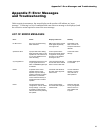
34
Appendix C: Wiring Requirements
Analog Connections
For optimum performance, some attention to wiring details now can reduce system
degradation later. The cabling recommendations given below follow standard wiring practice
for differential inputs.
Balanced Sources
The best way to run your system is balanced, where both “HOT” (+) and “COLD” (-) signals
are supplied from the source along with a GROUND/SHIELD. These are typically carried on
2 conductor shielded cables with XLR connectors on both ends.
Alternatively, connectors with Tip, Ring and Sleeve (T/R/S) jacks can be used. Whenever
possible, the cable shield should not be connected to any signal pin, but left to perform a cable
shielding function only. Note:
Under no circumstances should the safety ground wire be removed from the AC power
connector.
When using balanced sources with the LSR4328P or LSR4326P, either the XLR or T/R/S
input connector can be used, since the circuit is common to both. However, both inputs
should not be used simultaneously.
For balanced signals, the HOT (+) signal from your source should be connected to the tip of
the T/R/S connector or Pin 2 of the XLR input as shown in Diagram A. The “COLD” (-)
signal should be connected to Pin 3 of the XLR or the “Ring” of the T/R/S connector. To
avoid ground loops, connect the SHIELD at the source end but not at the LSR input.
Appendix C: Wiring Requirements


















